The world’s oldest RNA – an essential nucleic acid present in all living cells – has been extracted from the extinct woolly mammoth, a new study reveals.
Researchers in Sweden and Denmark have for the first time managed to successfully isolate and sequence RNA molecules from the 13ft-tall Ice Age beasts.
Representing the oldest RNA sequences ever recovered, they come from mammoth tissue preserved in the Siberian permafrost for nearly 40,000 years.
RNA is an essential molecule that performs many roles in the cell, from relaying the instructions to build proteins to regulating genes.
Experts think their results could help efforts to bring back to life extinct animals – not just the mammoth but the dodo and the Tasmanian tiger.
‘Our methods and results could indeed inform and help the efforts aimed at “de-extincting” certain renowned animals,’ study author Dr Emilio Mármol at Globe Institute in Copenhagen told the Daily Mail.
‘[Scientists] will need to attain a much more comprehensive knowledge of the biology of such extinct species – that is, information not only about which or where the genes are in the genome and what mutations differ between those and their modern living relatives, but also how these genes were expressed, regulated and dynamically functioning.
‘This is something that DNA alone cannot tell, and for which RNA is needed.’
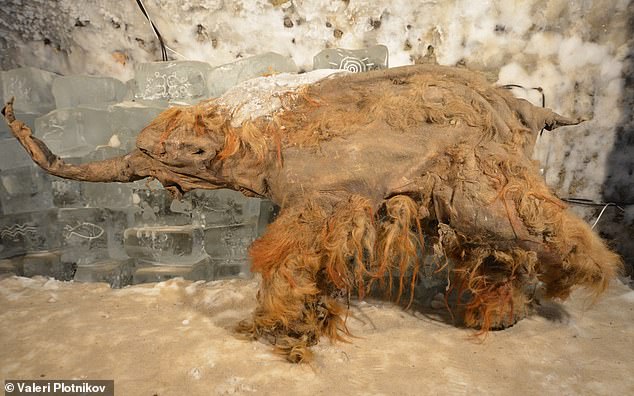
The researchers were able to identify tissue-specific patterns of gene expression in frozen muscle remains from Yuka, a juvenile mammoth (remains pictured)
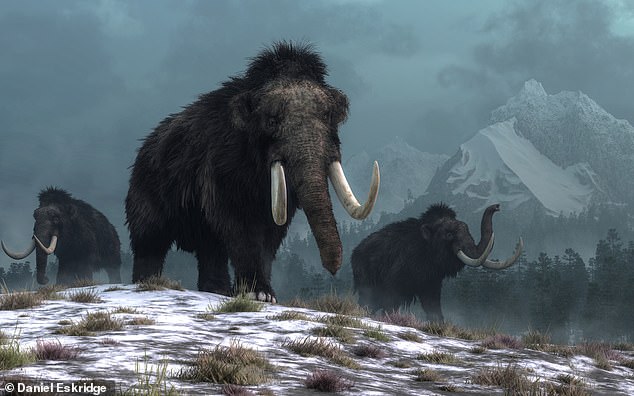
Woolly mammoths were elephant-like animals that evolved in the arctic peninsula of Eurasia around 600,000 years ago. The last mammoths died out around 4,000 years ago, after the construction of the pyramids at Giza, Egypt
A relative of the elephant, the woolly mammoth is one of the most famous extinct creatures of all, commonly depicted with ultra-curvy tusks and a heavy woolly coat.
Around 13 feet (four metres) tall and weighing around six tons, the massive mammal was widespread in northern Europe, Asia, and North America during the last Ice Age.
The species (Mammuthus primigenius) was one of the last in a line of mammoth species to exist before its extinction around 4,000 years ago.
Woolly mammoths co-existed with early humans, who hunted them for food and used their bones and tusks for making weapons and art.
However, the cause of their extinction is uncertain, with intense debate on the roles of human hunting and severe climatic change.
For years, scientists have been extracting and decoding mammoth DNA to piece together their genomes and evolutionary history.
Yet RNA, the molecule that shows which genes are active, has remained out of reach – until now.
For the study, the team sampled ‘exceptionally well-preserved’ frozen remains from 10 late Pleistocene woolly mammoths – one of which (‘Yuka’) is 39,000 years old.

One of Yuka’s legs, illustrating the exceptional preservation of the lower part of the leg after the skin had been removed, which enabled recovery of ancient RNA molecules
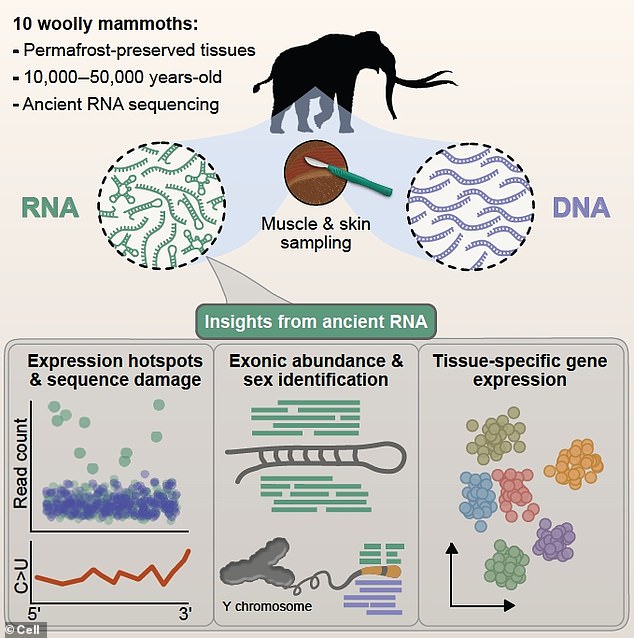
Scientists gained access to exceptionally well-preserved mammoth tissues unearthed from the Siberian permafrost, still containing RNA molecules frozen in time
Even though all 10 tissue samples analysed came from mammoths, only three of them revealed RNA sequences that could be ‘confidently assigned to be of mammoth origin’
‘Since these mammoths have been buried in the permafrost (frozen soil) for millennia, when we unearth them they also carry all sorts of environmental contamination,’ Dr Mármol told the Daily Mail.
‘This is mostly bacteria grown over the decomposing body before it freezing out completely, or also from modern contamination after they were recovered, mostly human DNA and RNA contamination from the people handling the samples.’
Excitingly, the researchers did successfully manage to find protein-building RNA molecules in the sample from Yuka – representing the oldest RNA ever sequenced.
When Yuka was alive, these RNA molecules would have coded for proteins with key functions in muscle contraction and metabolic regulation under stress.
The team also found indications that Yuka, a juvenile mammoth, suffered cell stress before death, likely due to being attacked by predators, probably cave lions.
Also in the samples they found RNA molecules that regulate the activity of genes, known as microRNAs – again, the first time this has been achieved.
‘These microRNAs are completely new to science and probably only expressed in mammoths, or at most in modern elephants, although we did not find evidence of them being expressed in modern elephant tissues,’ Dr Mármol told the Daily Mail.
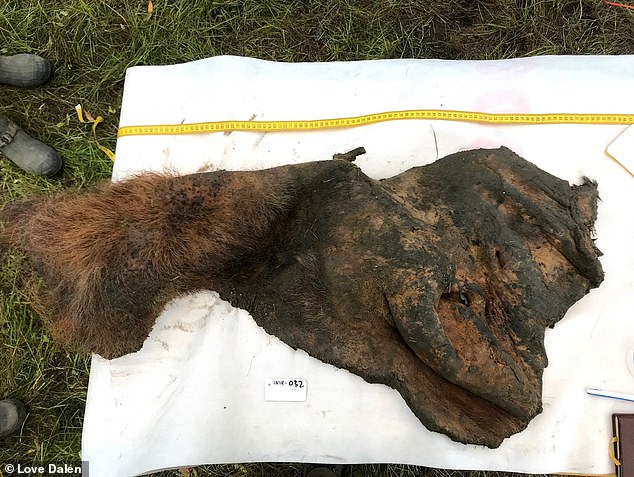
The skin and ear from part of the skull of a woolly mammoth that yielded ancient RNA sequenced. The skin was discovered in 2018 in Belaya Gora, near the Indigirka River in Siberia
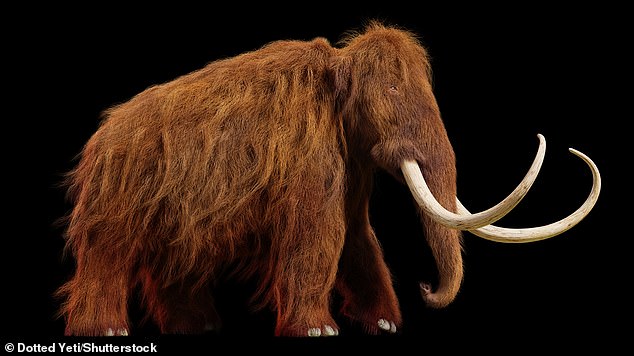
A relative of the elephant, the woolly mammoth is one of the most famous extinct creatures of all, commonly depicted with ultra-curvy tusks and a heavy woolly coat (file photo)
‘There is not much data on modern elephant microRNAs so maybe they do exist as functional units in them, but we do not know yet.’
The results, published in the journal Cell, reveal the ‘potential of RNA molecules to persist across deep timescales’ – much longer than previously thought.
In future it may also be possible to sequence RNA viruses, such as influenza and coronaviruses, preserved in Ice Age remains.
In the future, the researchers hope to conduct studies that combine prehistoric RNA with DNA, proteins, and other preserved biomolecules.
‘Such studies could fundamentally reshape our understanding of extinct megafauna as well as other species, revealing the many hidden layers of biology that have remained frozen in time until now,’ the academic added.


